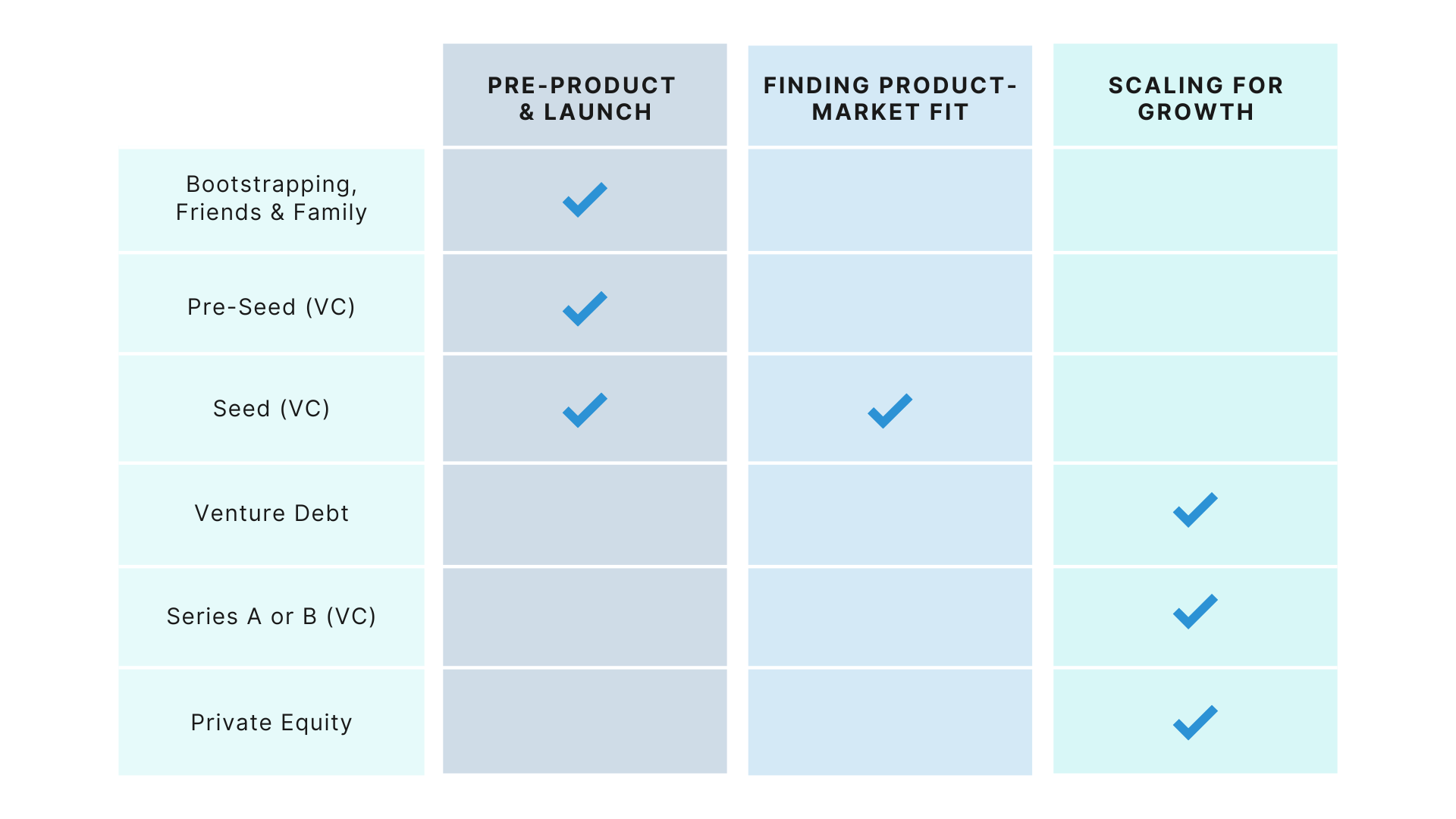Funding your SaaS company shouldn’t feel like gambling with your future. Yet many founders admit they’re confused about which funding option fits their stage and goals. Here’s how to choose wisely and show investors the metrics that matter. This guide breaks down your options clearly and shows you exactly which growth metrics will get investors’ attention.
We’ll cover the most common types of SaaS funding and the seven key numbers that prove your business is built to last.
Timing is everything. Seeking funds isn't about desperation; it's about strategic growth. You are likely in one of these three positions:
Founders have more choices than ever. Your company stage and growth goals will determine the best fit.

Angel investors are individuals who provide capital, often in exchange for equity or convertible debt. This is a common path for pre-seed or seed-stage companies. The best angel relationships happen when the investor brings relevant industry experience, not just a check.
Best for: Very early-stage startups looking for their first significant investment and mentorship.
Incubators help founders refine an idea, while accelerators help early companies scale quickly. Both offer a mix of seed funding, mentorship, and networking over a fixed period, usually a few months. They are great for building connections but often require you to give up equity for a relatively small investment.
Best for: Founders who want structured support, a strong network, and guidance in the earliest stages.
Venture capital is the most well-known funding route. VCs invest from a larger fund and look for companies with the potential for massive, 10x returns. This path comes with high expectations for rapid growth, a board seat for the investors, and giving up a meaningful slice of your company’s equity.
Venture debt is a type of loan for growth-stage companies. It works well alongside or in place of an equity round. Unlike VC, it is a form of minimally dilutive funding for SaaS companies, meaning you keep ownership of your business. Repayment is typically structured with fixed or floating monthly interest payments over a set term (e.g. 2–4 years). It’s a great way to extend your runway to cash flow positive or the next round, or fund specific growth projects without giving up additional equity.
Before you talk to any investor, you need to know your numbers. These six metrics tell the story of your company's health and potential.
This is the month-over-month percentage increase in your Net Monthly Recurring Revenue (MRR). It shows how fast you’re growing after accounting for new customers, upgrades, downgrades, and cancellations (churn).
This shows the total percentage of revenue lost from cancellations and downgrades, without factoring in upgrades. It’s a pure look at how much revenue is walking out the door. The inverse of this metric is Gross MRR Retention Rate, which calculates revenue retained month-to-month.
Expansion MRR calculates the new revenue generated from your existing customers through upsells, cross-sells, or add-ons.
ARPA measures the average monthly revenue generated per customer. It helps you understand the value of a typical customer.
LVR measures the growth of qualified leads, month over month. It’s a forward-looking metric that helps predict future revenue.
This is the number of months it takes to earn back the money you spent to acquire a customer.
With your numbers ready, make sure your pitch deck tells a clear financial story. Investors want to see that you understand your business model, market, and growth path.
Keep it concise (10–15 slides) and focus on:
For a deeper breakdown, see our full guide: How to Build a Winning Pitch Deck.
1. What metrics are SaaS investors and lenders actually looking at?
Investors and lenders typically focus on your track record reflected by metrics for growth, retention and capital efficiency. Net MRR Growth Rate, Net/Gross Churn Rate, and LTV/CAC are some examples of important measures of this.
2. Why do investors care about churn?
Churn shows how well your product keeps customers. Even if you’re adding new revenue quickly, high churn means you’re constantly leaking value and will struggle to scale efficiently. Low churn can indicate product–market fit, strong customer satisfaction, and predictable growth - three things investors need to trust that their capital will compound over time.
3. What metric do I need to track from day one?
Monthly recurring revenue (MRR) or annual recurring revenue (ARR). It’s the heartbeat of your SaaS and the first number investors ask for. It captures how much predictable revenue you generate each month and reveals whether customers see lasting value in your product.